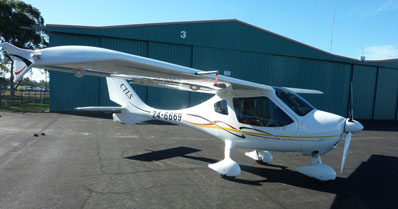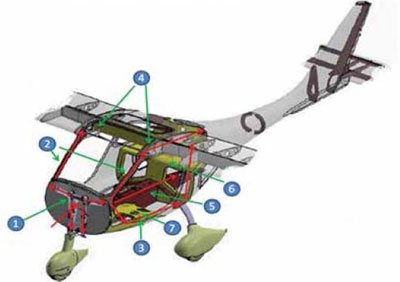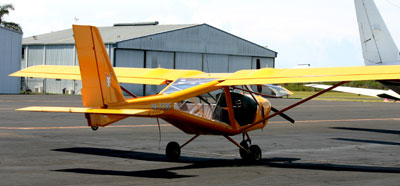-
Club pilots must record the following details on the white boards provided in the clubhouse. GA pilots must record their licence number, AFR due date, medical due date and the last date flown. RA-Aus pilots must record their Pilot Certificate number, RA-Aus membership due date, BFR due date and the last date flown.
-
No pilot is to fly any club aeroplane unless they have flown within the previous 60 days. If the 60 days has expired, contact Ray Lind – Club Captain (6582 0830) or George Northey – CFI (0414 956 665) to arrange a check flight.
-
For hangar security, club pilots are required to close and lock the hangar doors whilst leaving the hangar unattended.
-
If a member wishes to take a club aircraft away for one or more nights,
the aircraft must always be back for the monthly Pilot Proficiency Day. The aircraft must be flown for an average of 2 hours per day and is allowed to be away for a maximum of four days. Arrangements other than these can be discussed with the Recreational Aviation CFI.

Flight Design CTLS
CTLS Operating Handbook | Dynon Users Guide | Garmin GPS Manual
General Information
The CTLS structure is made from the very latest carbon fiber construction with rigid foam core and epoxy matrix using vacuum technology. All supporting structure consists of carbon and/or Aramid fibers, and since 2008 a new foam core material is used in exposed areas to provide improved resistance against weather, fuel and chemicals. All materials used in the construction are from Western suppliers and correspond to either DIN or Aviation standards. The CTLS wing surfaces are post cured at 80°C (176 degrees) as it is customary in aircraft construction.
The design of the CTLS carbon fiber cockpit has been intentionally done following reliable design principles known from the passenger cabins of modern cars, where crash loads are transferred through the passenger area to the crash-zones at the end of the vehicle, so that the cabin remains stable while the energy is absorbed in the periphery areas.
Looking at the CT models safety cabin you can find all key car design features as well.
The following illustration generalizes the force flow in the CTLS:
• Forces are introduced in a crash from the engine and nose gear through the big engine mount (1) into a strong A-pillar (2) and to the center tunnel (5).
• The door sill (3) is designed to transport the loads backwards and into the sandwich composite shell.
• The fuselage root rib area (4) is designed as a stiff roof rail to transports the loads backwards.
• The middle of the cabin is stiffened with a tunnel (5) that extends from the nose gear attachment area to beyond the luggage compartment.
• The cabin is closed at the end with the main bulkhead (6) that serves together with the door sill as B- pillar. All longitudinal elements extend to and beyond this main bulkhead.
• The floor section below the seats is designed with “Pyramids” (7) installed to the cabin floor, supporting the seats and stiffening the floor.
• The inner laminate of the cabin skin is done in Aramide, providing best occupant protection against splintering. The outer skin is designed as carbon fiber providing maximum stiffness and strength.
The suitability of this design has been proven in service now for 13 years. Accident history shows that the cabin provides a maximum of occupant protection even in a severe crash.

The 1.24 m (49-inch) cabin width of the CTLS has been increased in length to fit very tall and smaller people equally well. People with heights of 1.55 to 2.00 m (5 feet 1 inch to 6 feet 6 inches) sit more comfortably than ever. More storage space in the cockpit is provided by a new convenient jacket shelf for in-flight access and bigger outside baggage doors now give better access for bulky items stored aft of the cockpit. Two new windows in the rear give the cockpit a more open feeling and improve rearward visibility.
Large gull-wing doors held up by gas struts make entering and taking your seat easy. Three-point latches and door seals keep you secure inside. Comfortable seats with molded foam padding and pneumatically adjustable seat cushion and lumbar sections offer incomparable comfort and easy adjustment in height and length. From these seats, the remarkable visibility of CTLS will give you the feeling that you are in a helicopter with a sweeping view of the world.
The new engine installation reduces vibration and cabin noise is reduced further. Full dual controls and centrally located throttle quadrant are features of this ergonomically arranged cockpit. Easy to reach storage space and convenient map holders are thoughtfully provided. Standard ventilation and heating allow CTLS flying in all seasons.
The CTLS allows up to 50 kg (110 pounds) of baggage (total) to be safely stored in the dual storage compartments aft of the cabin area.
If you are finding it hard to find a Light Sport Airplane that fits you, try the CTLS. We think you will be pleasantly surprised.
New urethane polymer shock absorbers in the nose gear give high dampening and help to smooth out hard landings. The new composite main gear, developed and produced by a certified aerospace supplier is rugged and absorbs more than 50% of the energy on the first rebound.Five–axis CNC milling technology produced the metal molds for the new composite main landing gear. New tires developed together with our partners give the correct balance of durability, performance and light weight.
The fuselage on the CTLS is 390 mm (1 ft 1 in) longer, which increases pitch stability and dampening significantly. The result for pilots is a smoother ride in turbulence and much easier landings.
By optimizing the shape of the fuselage, drag has been reduced while cleaning the airflow to the stabilizer. The smallest improvements were executed to further increase lift and reduce drag.
The stabilizer trim tab incorporates a new flexible elastic hinge, which is aerodynamically cleaner plus the control linkage has improved gearing for finer control and better trim feel.
The wing of the CTLS uses the same efficient airfoil as the CTSW. Advanced winglets reduce induced drag, improving climb, cruising range and aileron control at low speeds while conveying a 21st-Century look.
In total, the aerodynamic changes have improved the CTLS’s stability and its ease of flying significantly. While the top speed of the unlimited CTLS is impressively high, all CTLS fly with efficiency and low fuel consumption at all speeds.
The further you fly-the more the CTLS superiority shows. With the CTLS’s new long-range comfortable seats and large baggage compartments, countrywide flights become an achievable and affordable adventure! The CTLS gives you the performance and freedom to make your flying dreams a reality!

Aeroprakt A22 Foxbat
FoxBat
Pilot Operating Handbook PDF Download | Quickstart Guide to AvMap Ultra EFIS
The Aeroprakt A22 Foxbat is a rugged go-anywhere aircraft.
Very short take-off and landing (VSTOL) performance is
nothing short of breathtaking! The plane is superbly manoeuvrable
- it will turn on a cent in the air or on the ground.
It's very light on the nose-wheel, enabling it to land
and take off like a tail-dragger - without all the fancy
footwork! Cross-wind capability is 17kts. Cruise is a
genuine 85-90kts, top speed is 105kts. And when you experience
the space inside, you'll realise just how cramped the
competitors are. The view out of the A22 Foxbat makes
even a helicopter seem claustrophobic!
Features
-
All metal anodised aluminium riveted airframe with ‘Ceconiote’
doped fabric covered control surfaces and part wing. Cowls
and wingtips are composite. All fabric is UV-proofed when
sealed and painted, giving a projected 20-year life.
-
Rotax 912ULS (100hp) 4-stroke, liquid cooled power. These engines
have achieved an enviable reputation for reliability,
with a 1,500 time-before-overhaul – about 10-15 years
for the average flyer!
-
A spacious and comfortable cockpit - 128cm (50+ inches)
wide, 2-seats side-by-side. Doors are glazed down to the
floor, giving a truly 'helicopter-like' view out! Glazed
panels behind the cockpit give an almost 360 degree view.
-
Stall peed with flap is a genuine 27kts - as tested by both
the PFA in the UK and the DAeC in Germany. Stall characteristics
are completely safe - no tendency at all for wing-drop.
This means you can safely cruise at 40-45ktsclose to the
ground without worrying about ‘tucking’ under.
-
Dual controls – ‘Y’ double handled centre stick, hydraulic
brakes, dual rudder pedals and throttles, flap lever centrally
placed in the roof.
-
Full span ailerons with 10 and 20 degree 'droop' positions,
for ultra-short take offs and even shorter landings.
-
High-lift aerofoil section with forward swept wings to
give excellent stall and slow speed handling characteristics.
-
Wide tyres on wide undercarriage are good for rough and/or
soft strips. Centre of gravity is close to the main wheels,
so the nose can be kept clear of the ground very easily
- there's even a small tail wheel!
-
Finally, the Aeroprakt A22 Foxbat is big fun to fly - the view
out is unbeatable (unless you buy a helicopter!), it turns
on a cent both in the air and on the ground, take-off
is breathtaking and the good cruise speed means you can
take it places. The VSTOL and relaxed flying characteristics
of the A22 Foxbat make it the right alternative for pilots
moving on from rag & tube ultralight aircraft but
who still wish to carry on using their small airstrips
with confidence. This aircraft will also surprise and
delight pilots switching to the Sport/Recreational aircraft
category from a more ‘formal’ background in GA aircraft.
Around 150 A22s are currently flying - in Australia, Canada,
France, Germany, Italy, Spain, Ukraine, United Arab Emirates,
UK and the USA. |



